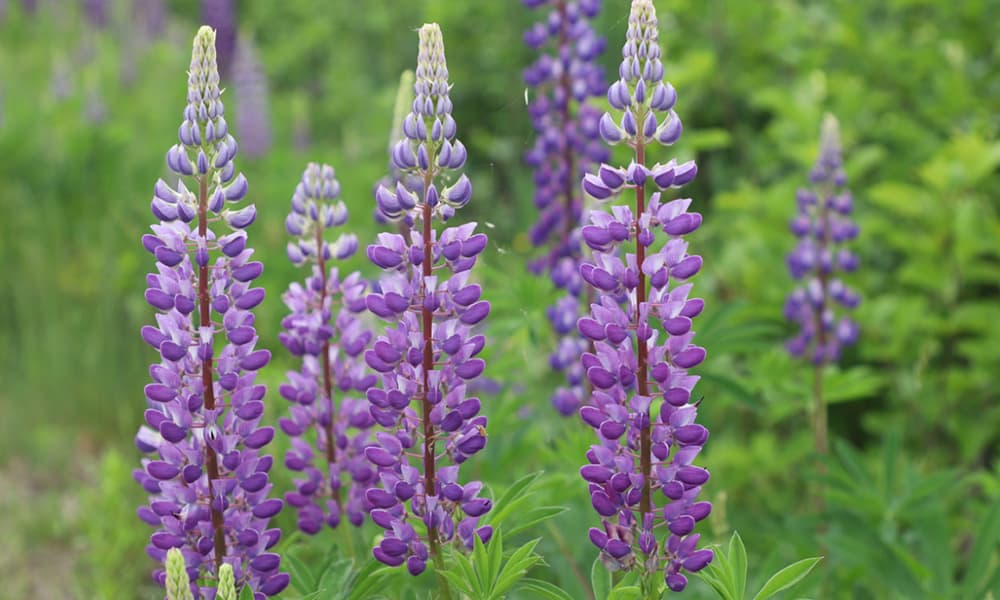News
Big Leaf Lupine (Lupinus polyphyllus)
Lupine is often grown in our youth programs. They’re easy to grow from seed and germinating lupine seeds is an excellent learning experience.

Lupine is often grown in our youth programs. They’re easy to grow from seed and germinating lupine seeds is an excellent learning experience.
Seeds need to go through a period of dormancy (deep sleep) to prepare for germination. This is an adaptation that makes sure seeds only germinate when temperature and moisture conditions give them the best chance of succeeding. Before waking up from this deep sleep, most seeds need to be exposed to two things: cold temperatures and moist conditions. The word for this is: stratification. The moisture softens the seed coats (outside layer) and activates special molecules in the seed that will convert starch into sugar, which is what the seed embryos need to develop.
Stratification is an important process seeds experience before they grow, but sometimes another step is needed to! Some seeds have very thick coats, and lupine is one of them. With coats so thick, it’s hard for water to enter, and this slows germination. In nature, when the seeds fall to the ground and spend the whole winter there, the seed coat gradually softens. But, when we are starting seeds indoors, we have to mimic this amazing process that nature does. Scarification is the terms for this: think of it as scarring the seeds to help water enter. There are different ways to scarify seeds: in youth programs we experiment to test out a few ways and then see who germinates more quickly!
Identification:
- Branched, woody stems
- Leaves have 10-17 leaflets and a palmately compound which means they radiate from a single point
- Flowers are blue to biolet, pe-like in dense clusters
- Seeds are hairy pods up to 5cm long
Ecology:
Moist to wet open habitats and disturbed sites
Bird and Pollinator Relationships:
attracts native bees, bumble bees, and other beneficial insects with its nectar and pollen-rich flowers that bloom from mid-spring into mid-summer.
Traditional use, food, and medicine:
Lupine is not edible, but can be a good companion plant for growing other foods as lupines fix nitrogen in soil and can fertilize poor soil.
Sources: Plants of the Pacific Northwest by Pojar and McKinnon